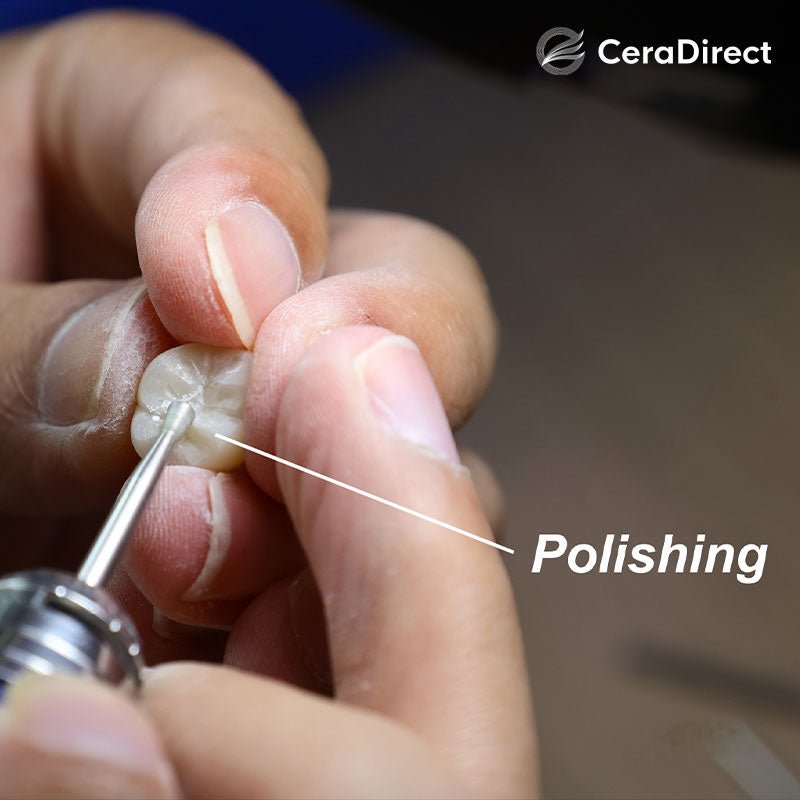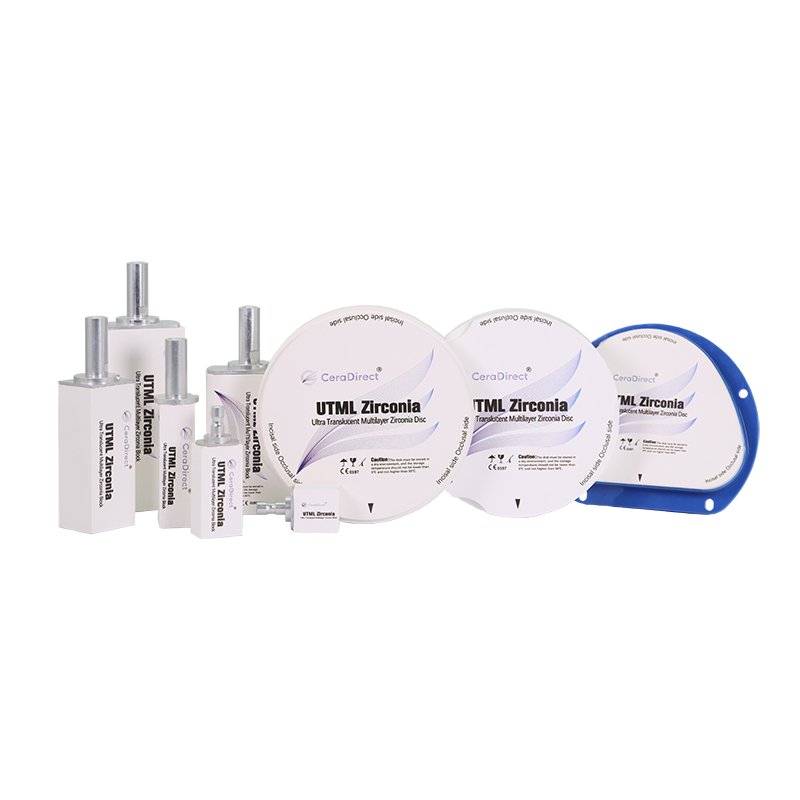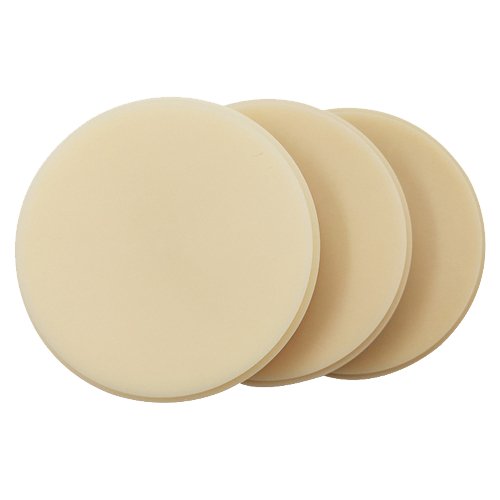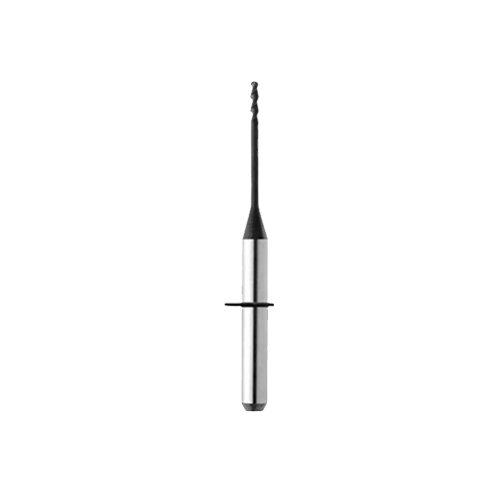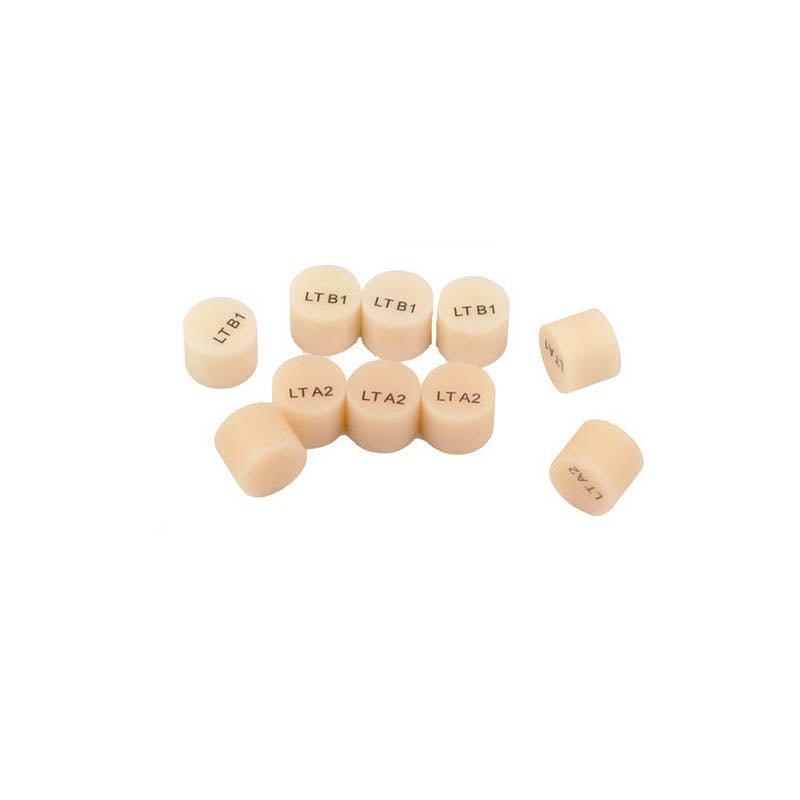
Understanding Zirconia:
Zirconia, or zirconium dioxide, is a resilient material marked by its superior strength, making it an excellent choice for the creation of dental posts, implant abutments, and both single and bridge restorations. When enhanced with yttrium, Zirconia becomes partially stabilized, further boosting its mechanical properties. Additionally, this modification allows it to withstand high temperatures during the sintering phase, meaning zirconia restorations are particularly durable and hard-wearing.
Given its high resistance to fractures, zirconia is ideal for posterior restorations, in locations where masticatory force is at its highest. Zirconia can be customized to match other teeth in the oral cavity for a natural appearance. However, its opacity may lack the desirable translucence of natural teeth, limiting aesthetics in anterior applications where aesthetic demands are higher.

Understanding Lithium Disilicate:
Lithium disilicate is a type of glass ceramic marked by a crystalline structure that offers a balance of aesthetics and strength. This material provides higher translucency than zirconia, closely mimicking the appearance of natural teeth and making it an excellent choice for anterior restorations and veneers, where aesthetics are paramount.
While lithium disilicate does not match zirconia’s excellent strength, it is still strong enough for single-unit anterior and posterior restorations and three-unit anterior bridges. Unlike non-stabilized zirconia, lithium disilicate doesn’t require a sintering process, making it more suitable for chair-side restorative techniques.
Key Differences:
Strength and Durability: Zirconia outperforms lithium disilicate in terms of mechanical strength, making it more suitable for heavy load-bearing applications.
Aesthetics: Lithium disilicate offers superior translucency, closely resembling the natural enamel's appearance, providing more pleasing aesthetics, especially in the anterior region.
Processing: While zirconia restorations often require a sintering process, lithium disilicate can often be processed without sintering, making it more time-efficient in certain circumstances.
Versatility: Zirconia’s resistance to fracture facilitates its use in various procedures, from single crowns to bridges. On the other hand, lithium disilicate's optimal aesthetic characteristics limit its use typically to single-crown and small-bridge restorations.

Conclusion:
On weighing the functional demands against aesthetic requirements, dental professionals can select the optimal material for a specific dental restoration. While zirconia brings in superior strength and broad applicability, lithium disilicate offers higher aesthetics and translucency.
As innovative developments continue to enhance dental restoration materials' properties, both zirconia and lithium disilicate will maintain their importance in prosthodontics. The advances in dentistry strive to combine aesthetics and strength, continually seeking to merge the best of both materials in one restorative solution. Understanding the key differences between these materials enables dental professionals to provide personalized, high-quality care for their patients, offering restorations that combine beauty, durability, and performance.

